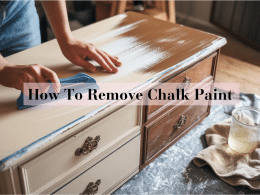Moving house is a physically demanding experience if you’re doing it yourself, especially if your regular job is relatively sedentary and your muscles aren’t used to the bending and heavy lifting.
Packing, lifting, and transporting belongings can pose significant risks of injury due to both immediate strains, and through longer-term muscle fatigue.
Avoiding these injuries requires careful planning, proper techniques, and an understanding of the tools available to ease the burden. Let’s have a look at how to avoid injuries, with a focus on manual handling, back injuries, and the use of mechanical assistance, such as trolleys.
Apart from minor cuts, the most common injury associated with moving house is back injury. The back, particularly the lower back (lumbar region), is vulnerable when lifting heavy objects because we tend to use improper lifting techniques that lead to strains, sprains, or even more serious conditions like herniated discs.
To avoid back injuries, it is essential to understand the principles of manual handling, a term used to describe the process of lifting, carrying, pushing, or pulling loads by hand.
Manual handling injuries are usually the result of lifting items that are too heavy or awkwardly shaped for the body position we have to adopt. A weight that might be light when picked up close to the body is much more difficult to manage when it is raised over the head. To minimise the risk, start by assessing the load before attempting to move it.
If an object appears too heavy or cumbersome, it’s better to seek assistance, break the load into smaller, more manageable pieces or use a mechanical aid (see below).
When lifting, use your legs rather than your back. Bend at the knees, tighten your core and keep your back straight, ensuring that the load remains close to your body. This technique reduces the strain on your lower back and shifts the effort to your stronger leg muscles.
In addition to proper lifting techniques, pacing yourself during the move is crucial. Fatigue can impair your judgment, make it more difficult to repeat an activity accurately and increase the likelihood of injury. Take regular breaks, stay hydrated, and avoid rushing through the process. Listening to your body is key; if you feel pain or discomfort, stop and reassess your approach.
While manual handling is an essential skill, it’s equally important to recognize when mechanical assistance is necessary. Trolleys, dollies, and hand trucks are invaluable tools that can significantly reduce the physical strain of moving heavy or bulky items, and you can usually hire them with a removal truck. These devices allow you to transport loads with minimal effort, reducing the risk of injury. Of course, you still have to load and unload a trolley, so be aware of any bending involved when doing this.
Trolleys and hand trucks come in various designs, each suited to different types of loads. For example, a standard two-wheeled hand truck is ideal for moving boxes, while a flatbed trolley is better suited for larger items like furniture. When using these devices, ensure that the load is securely fastened and balanced to prevent tipping. Pushing the trolley or hand truck rather than pulling it can help maintain better control and reduce the risk of overexertion.
For particularly heavy or awkward items, such as large appliances, pianos or recreational gear (e.g. canoes), professional movers may be the best option. Professional movers have had training in safe handling and lifting techniques and have access to specialised equipment that can make the process safer and more efficient. While hiring professionals may be an added expense, it can significantly reduce the risk of injury and ensure that your belongings are transported safely.
Another consideration when moving house is the environment in which you’re working. Slips, trips, and falls are common hazards, particularly when carrying heavy or bulky items. Before you start moving, take a few minutes to clear pathways of any obstacles and ensure that floors are dry and free of clutter. Wearing appropriate footwear with good grip can also help prevent slips and falls.
Consider the use of ramps or stair climbers if your move involves navigating steps or uneven surfaces. These tools can make it easier to move heavy items up and down stairs, reducing the strain on your body and lowering the risk of injury.
Moving house also involves packing, which, if not done correctly, can lead to injuries as well. Overloading boxes can make them difficult to lift and carry, increasing the risk of back injuries. Aim to keep box weights manageable, and use smaller boxes for heavier items like books. When packing, distribute weight evenly to prevent boxes from becoming unbalanced and difficult to carry.
Finally, it’s important to remember that planning and organization can play a significant role in injury prevention. By creating a detailed moving plan, you can avoid the need for last-minute rushing, which often leads to mistakes and injuries. Consider enlisting the help of friends or family members to share the workload, and ensure that everyone involved in the move understands the importance of safe handling practices.
Moving house is a physically demanding task that can pose significant risks of injury, particularly to the back. By understanding and applying the principles of manual handling, pacing yourself, and utilizing mechanical aids like trolleys and hand trucks, you can reduce the risk of injury and make the moving process safer and more efficient. Remember, when in doubt, seek assistance, whether through mechanical means or professional movers, to ensure a smooth and injury-free move.











